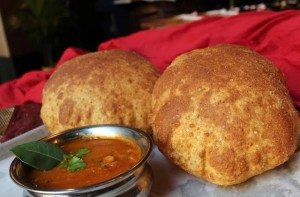4307 people reached on FB page Lassi with Lavina
858 views on LinkedIn – Sattam Sinha and 9 other Likes
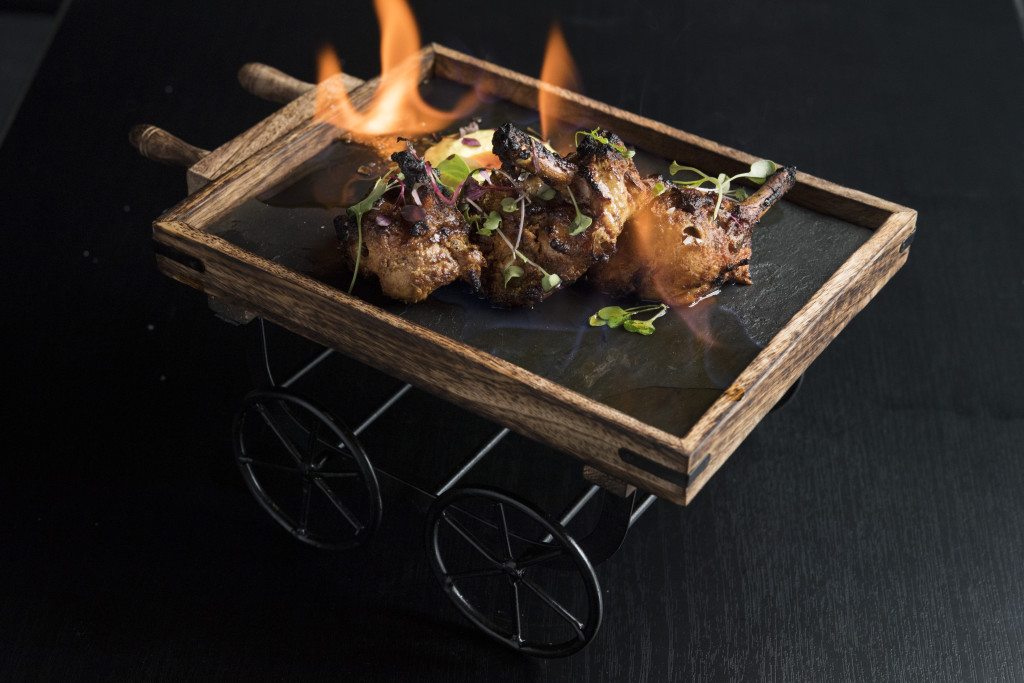
aRoqa – Romancing Indian Food in Chelsea
[dropcap]T[/dropcap]he first time I went looking for aRoqa, I actually by-passed it by without seeing it! It is such a natural part of the Chelsea streetscape that it seems to merge right into the neighborhood. It’s a far cry from the ornate Indian restaurants of the past with their sandalwood elephants and their samosas.
You’ll find neither at aRoqa.
This ambivalence is intentional in Chef Gaurav Anand’s latest venture where he has created a chic, downtown lounge which is casual yet sexy, almost a dark palette for the pop of color of modern Indian food. The minimally-lit black interiors have a gold ceiling and touches but create a cozy intimacy for friends, families and lovers. In India, a roka after all signifies an engagement between two people and a celebration with loved ones.
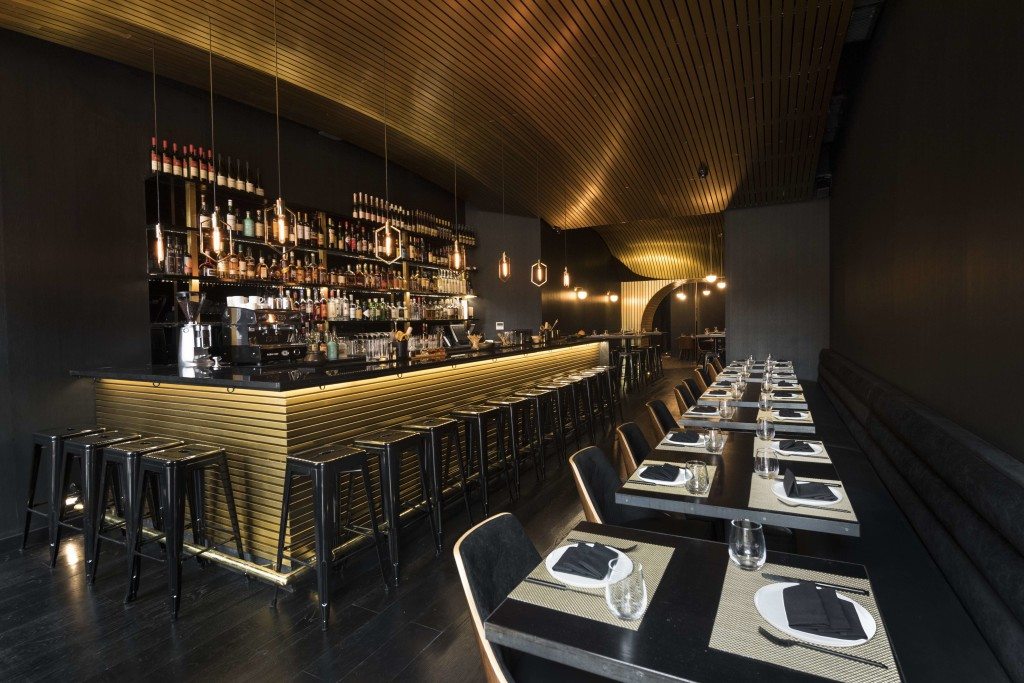
[dropcap]A[/dropcap]nand, known for the traditional delights of Indian food at Bhatti Grill, Moti Mahal and Awadh, is like a visual artist now showcasing his contemporary period. You won’t find the staples of Indian restaurants – Chicken Tikka Masala, palak paneer or chole bature here. Instead, it is Anand’s innovative, sometimes whimsical twist on the many dishes he grew up with, his own interpretation for diners hankering for new fresh creations with the spice of India.
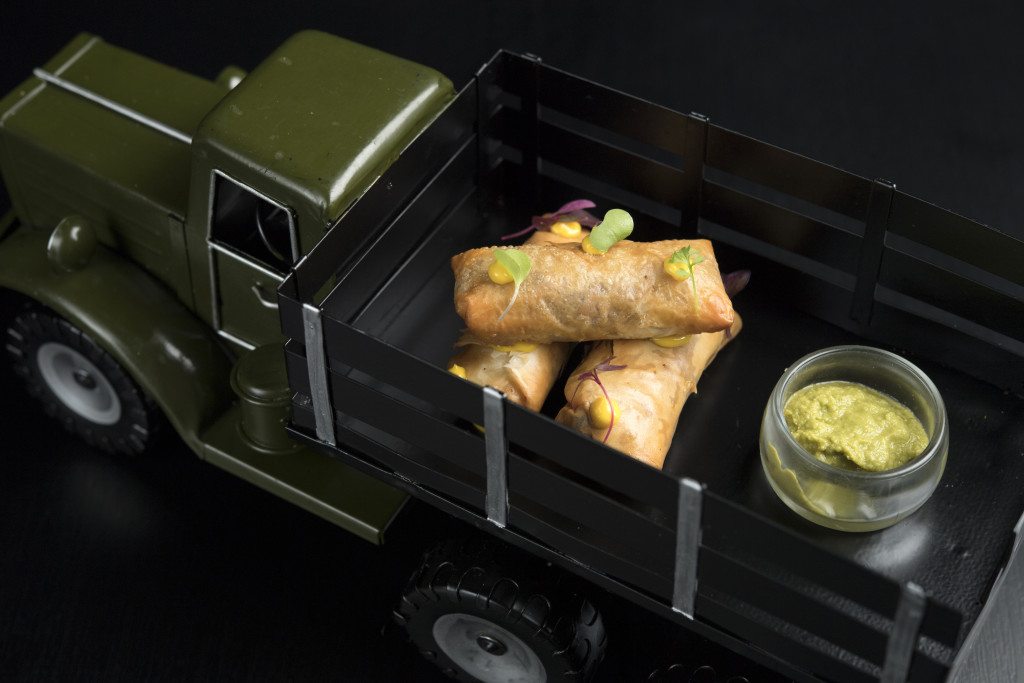
[dropcap]Y[/dropcap]ou are guaranteed to smile during your visit to aRoqa for your dishes arrive in true desi style via miniature truck, bicycle and hand-cart, common enough transportation in Indian cities. Thankfully they don’t arrive in IST (Indian Standard Time) or as the joke goes – Indian stretchable Time – for everything is served fresh, hot and right off the stove.
American audiences have become blasé about street food, chaats, tikkas and mangoes – so it’s refreshing to be served these with a twist. The dishes are very New York in their fusion – after all, you can’t walk a block of the city without meeting varied cultures. This is fusion at its best which embraces techniques, synergies, spices and fresh ingredients together. The Achari Murgh Lukhmi arrives in trucks, with phyllo and a herb-raisin chutney. The Bhatti Murgh Ki Champ is presented on the cart, enhanced rum flambé and gram flour chutney. Vindaloo Momos again tease your memories for these are pork dumplings but served with bacon crumble, green apples and a vindaloo sauce.
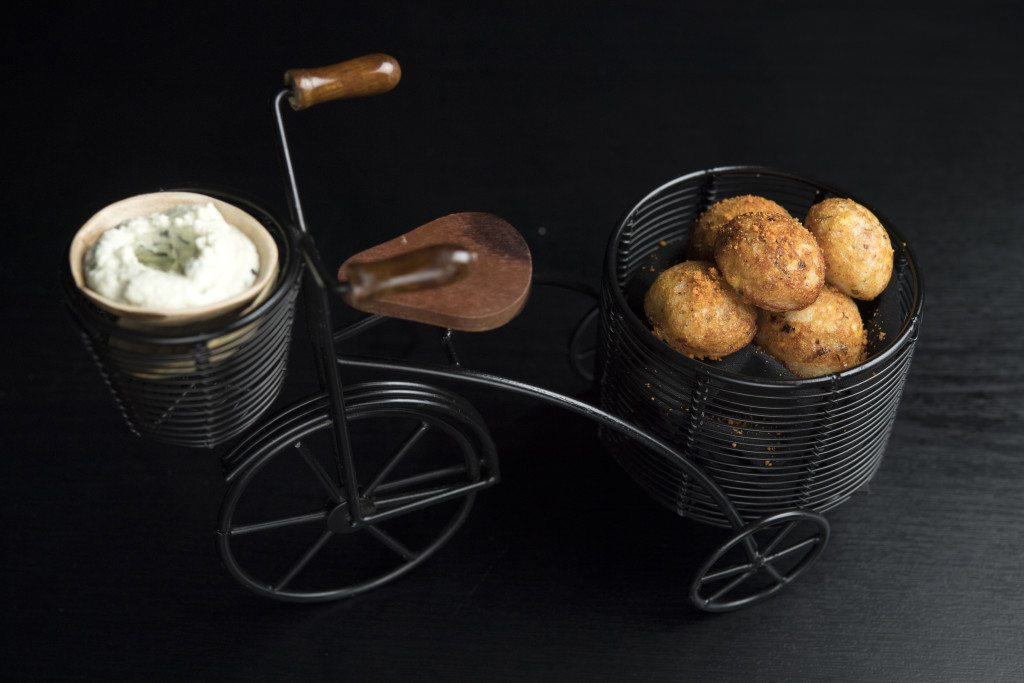
[dropcap]W[/dropcap]hat I loved best was that Anand had remembered the vegetables of a traditional Indian household and given them a new spin. How many of us have eaten arbhi (colocasia) or bhee (lotus root) recently in a restaurant? He’s given these forgotten, ancient veggies a new lease of life by introducing them to a New York audience. The Kurkuri Bhel has no deep-fried poori but crunchy lotus roots that makes this bhel both flavorful and healthy, with its avocado-tomatillo-green chili emulsion.
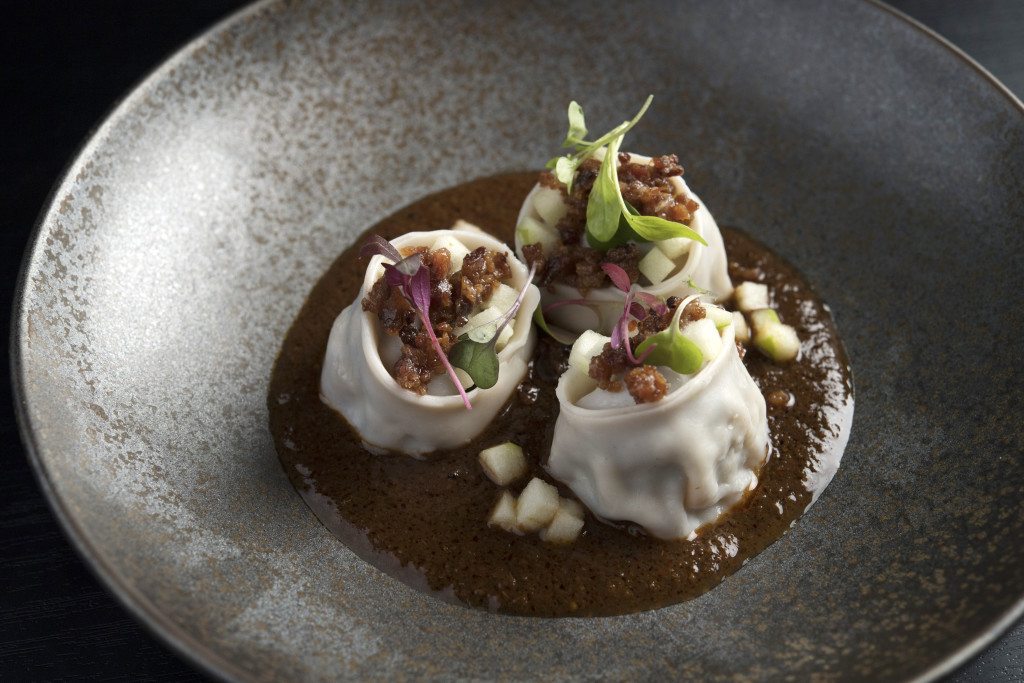
There’s Sunchokes Chaat, which puts a healthy spin on chaat, the street food, made of sweet potato with a pomegranate emulsion and bean sprouts, without sacrificing any of the traditional flavor. Kandhari Arbi consists of colocasia, fenugreek bread and pickled onion salsa – a forgotten but new taste on the tongue and beautifully presented. Vegetables that you don’t find often in traditional Indian food are used in creative ways in Butternut Squash ke Kofte – broccoli – sweet corn malai curry served with kale chips and saffron rice.
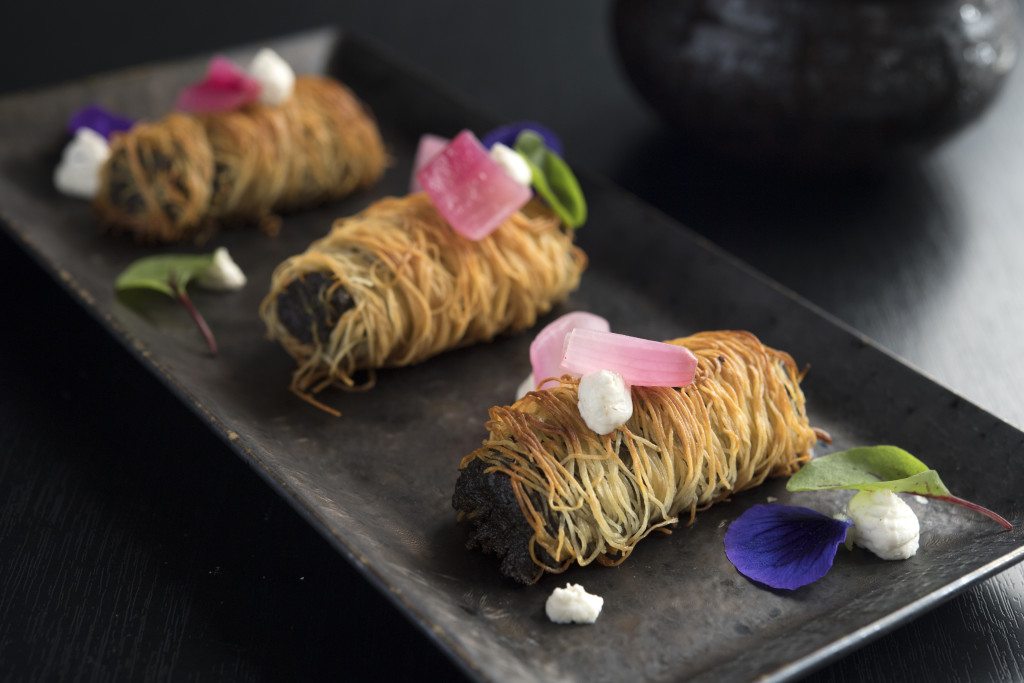
[dropcap]F[/dropcap]or the vegetarians who have long been shortchanged in Indian restaurants by being given deep fried pakoras and samosas – there are Kataifi Mushrooms, wild mushroom and saffron croquettes served with goat cheese relish. The marinade and process is similar to famous meat galouti kebabs. So vegetarians finally get to taste the essence of these famous kebabs of Hyderabad! I loved the marriage of unlikely ingredients – Corn Paddu consists of rice cakes, coconut and lime chutney with a dash of gunpowder masala, which in the past I had only associated with South Indian food. There’s a whole menu of non-vegetarian dishes but being vegetarian, I have concentrated on telling you mainly about the meatless ones.
An intriguing dessert is aRoqa Daulat ki Chaat which consists of saffron milk foam, baba au rum, blackberries and coconut kheer. This actually happens to be vegan too.
There are also a lot of fun drinks created by head mixologist Stephen Thomas. I particularly enjoyed the new taste sensation of Shadowplay which uses Agave de Cortes Mezcal Joven, clementines, cactus water, turmeric, ginger and lime. I loved the flaming, smoking presentation and the fact that it used the very Indian spices like turmeric, ginger and lime.
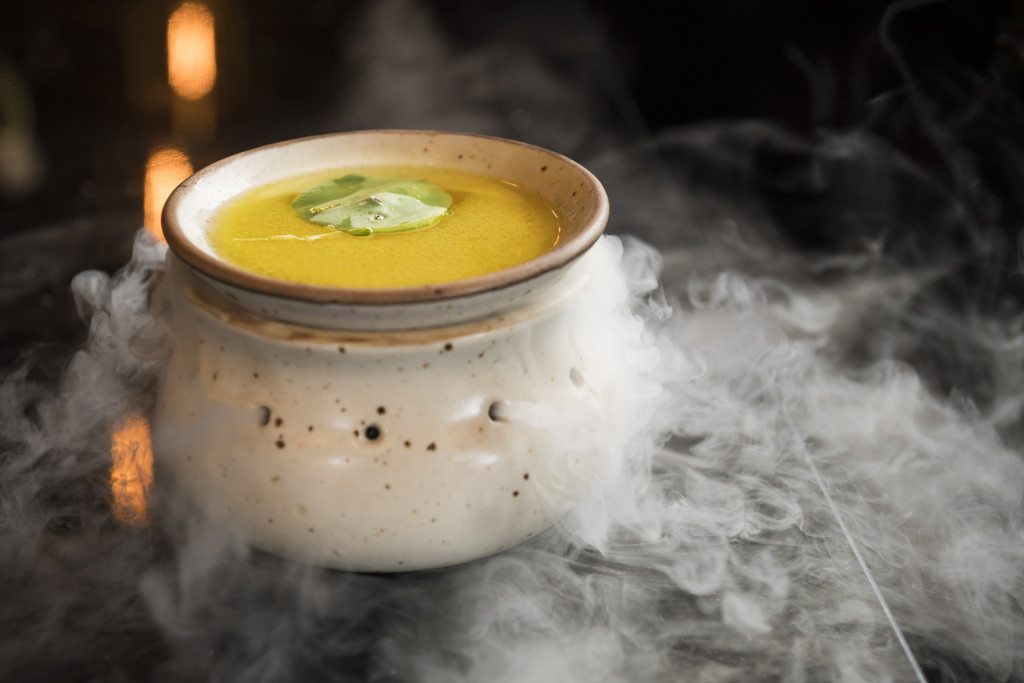
[dropcap]A[/dropcap]nand’s business partner in this new venture is Monica Saxena. I asked her how the collaboration of aRoqa , which actually means an engagement in Punjabi, came about. She said: “My fiancé Salman Khan and I met Gaurav and his wife Shagun through a common friend who was dining at Awadh. We fell in love with the food and asked Gaurav to cater for our wedding reception later that year. Following the reception where the Awadhi food was the talk of the night, we invited Shagun and Gaurav to thank them for catering the reception. Common vision, a dream and a passion for food were the ingredients for partnership where each clearly understood the other’s strengths and weakness and we created the experience called aRoqa!”
Buzzing drinks, a new take on Indian food and a happening atmosphere. The Indian food story just added a new chapter…
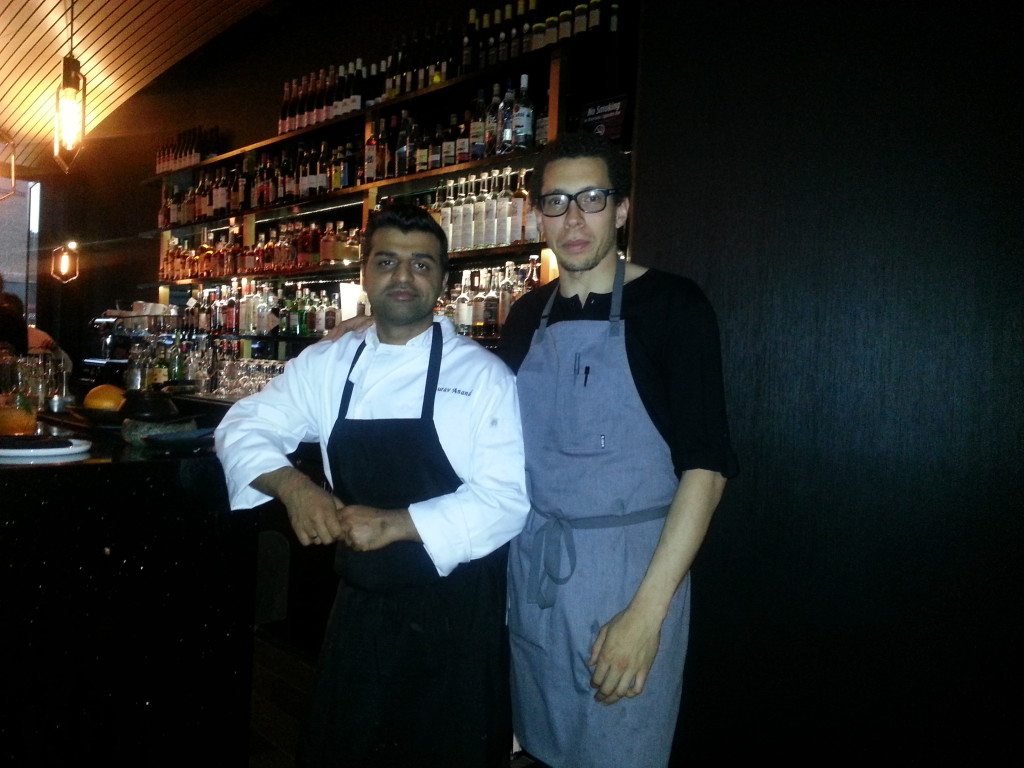
Face to Face with aRoqa Chef-Owner Gaurav Anand
Why do you think NYC needed another Indian restaurant?
New York City never needs another restaurant – look at every corner of every block – it is filled with restaurants! What it needed was another perspective on Indian food, and that’s our mission behind aRoqa.
How and why were you inspired to bring in ancient vegetables and ingredients like lotus root, arbi, millet flour, etc?
These are commonly used vegetables and flours in primarily vegetarian homes in India . They have been vastly ignored and not acknowledged in Indian cuisine in the US. We decided to bring them to our table to give the eaters another perspective of Indian cuisine and ingredients.
Is the process of making mushroom galoti kebabs similar to the original meat kebabs – what spices do you use to make them taste so decadent?
Yes, the process is very similar and painstakingly lengthy, with a lot of love and patience- some of the spices we use are saffron, chaat masala, cardamom powder and fresh ginger and garlic paste.
What’s been the most surprising thing for you in creating this new restaurant?
I learned how patience is tested at every step of the journey and how the old Indian saying “Whatever happens, happens for the best” saw us through with a smile and thus creating a “happy spirit” that strangers comment on. When diners are asked if they had a good time at aRoqa – the consistent response has been – “It’s a very happy place which makes one feel upbeat.”
Do you think aRoqa will help change the perception of Indian food in the US?
Absolutely, that is the objective. Indian food can be sexy, seductive and can dance on your plate! It can create magic, it can peek through the smoke, it can come on carts, trucks and bikes, taking you back to how vegetables and fruits were actually carried around home-to-home and sold in India. I am sure this aRoqa (engagement) will culminate in a long happy marriage with New York foodies!
Related Articles:
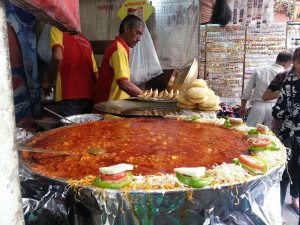
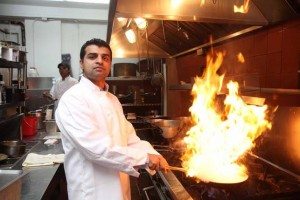
The Curry Crusaders in America
